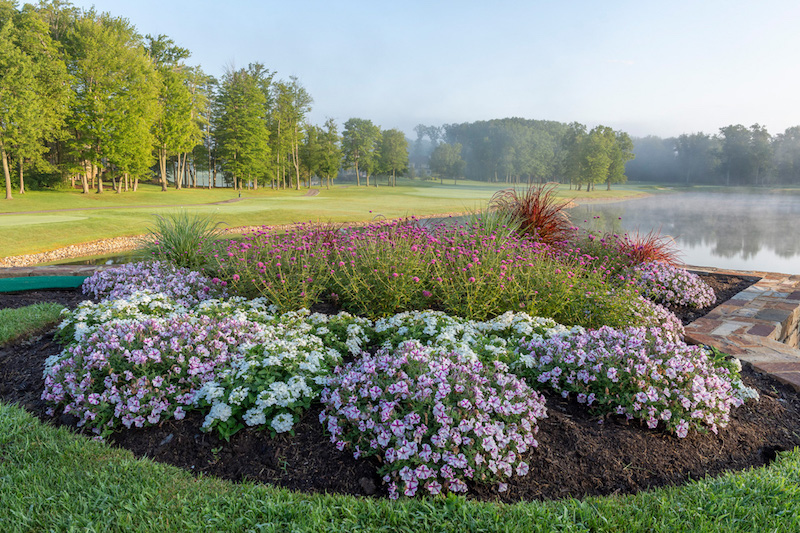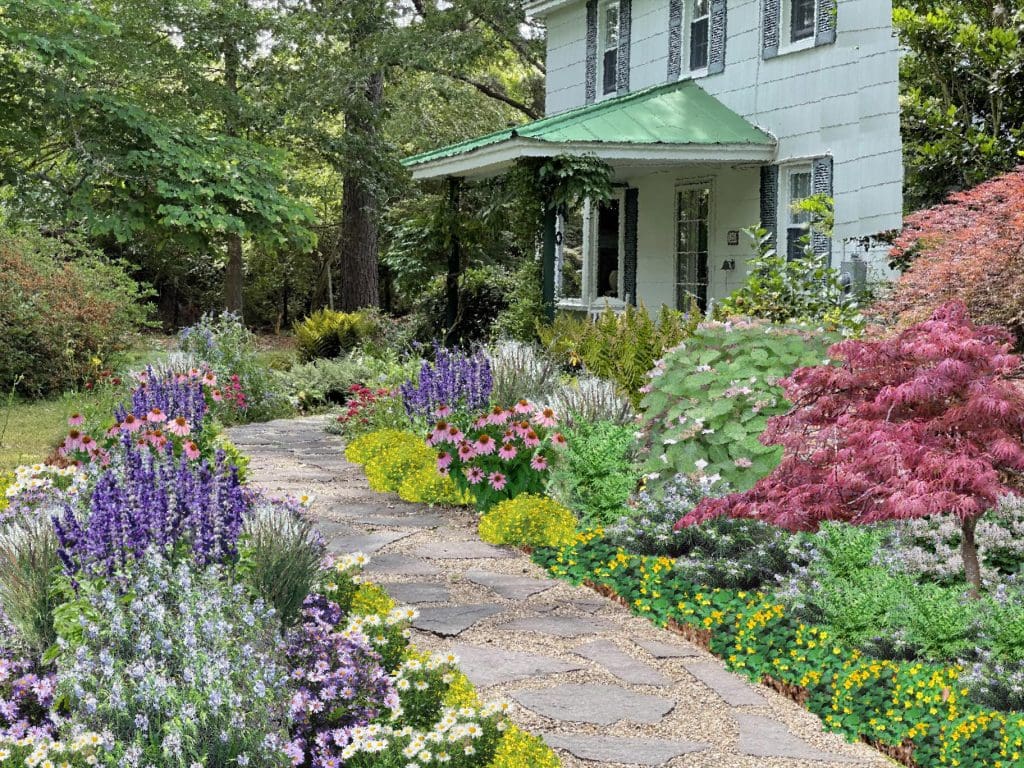Things about Hilton Head Landscapes
Table of ContentsThe Best Strategy To Use For Hilton Head LandscapesAn Unbiased View of Hilton Head LandscapesHow Hilton Head Landscapes can Save You Time, Stress, and Money.3 Simple Techniques For Hilton Head LandscapesThe Facts About Hilton Head Landscapes RevealedHilton Head Landscapes - The FactsThe Facts About Hilton Head Landscapes UncoveredHilton Head Landscapes Fundamentals Explained
Form compatibility is also a major component of unity in designone or 2 strikingly various kinds are excellent for comparison and focus, however generally all other kinds ought to have some resemblances for a linked appearance. Texture describes exactly how rugged or fine the surface of the plant or hardscape product feels and/or looks.
Examples of plants with crude texture consist of philodendrons, agaves, bromeliads, hollies, hands, and hydrangeas. Hardscape with crude appearance consists of rough-cut stone, rough-finished block, and incomplete wood with knots and an increased grain. Aged or old construction material that keeps a weather-beaten surface area is usually rugged in appearance. Qualities that create great appearance consist of little vegetation; thin, strappy fallen leaves (grasses) or high, thin stems; little, thick twigs and small branches; long stems (creeping plants); and little, fragile flowers.
Examine This Report about Hilton Head Landscapes
A lot of plants are average appearance, in that they can not be defined as having either crude or fine structure. Medium-textured plants act as a background to link and merge the crude- and fine-textured plants.
To make a space feel smaller, put the rugged structures along the external border and the great appearances closest to the visitor. The information of the coarse texture makes the plants appear closer and makes the room feel smaller. The perceived texture of plants can likewise alter with the distance from the plant.
How Hilton Head Landscapes can Save You Time, Stress, and Money.
Vibrant shades raise the comparison and make the texture show up coarser, while low-key shades can flatten appearance. Hardscape with a rugged texturesuch as extremely rough rocks and strong, big timberstends to make all plant material show up much more moderate distinctive. Developers commonly develop a texture research (Figure 8) theoretically to aid decide the setup of plant products.
Color in plant product and hardscape includes rate of interest and selection to the landscape. Color is the most conspicuous component in the landscape and is usually the emphasis of a lot of house owners; however, it is likewise the most short-lived aspect, typically lasting just a few weeks a year for specific plants.
The Single Strategy To Use For Hilton Head Landscapes
A simple description of the shade wheel includes the 3 primary colors of red, blue, and yellow; the 3 second colors (a mix of two primaries) of environment-friendly, orange, and violet; and 6 tertiary shades (a mix of one surrounding primary and secondary shade), such as red-orange. Color concept explains the partnership of colors to each various other and exactly how they should be utilized in a make-up.

Similar (occasionally called harmonious) color design are any kind of 3 to 5 shades that are surrounding on the shade wheel, such as red, red-orange, orange, yellow-orange, and yellow, or blue, blue-violet, and violet (bluffton landscaping). The shades belong to every other due to the fact that they normally include 2 primaries mixed to create an additional and two tertiary colors, which implies they share usual residential or commercial properties
They have a tendency to have high contrast between them. The most common sets are violet and yellow, red and eco-friendly, and blue and orange. Complementary colors are usually located normally in flowers; an usual set is yellow and violet. Color is found in the blossoms, foliage, bark, and fruit of plants.
How Hilton Head Landscapes can Save You Time, Stress, and Money.
Environment-friendly foliage in all its numerous shades is the leading shade by amount, however various other shades capture focus much more readily as a result of their high contrast to the color green. Color is likewise found in buildings, rocks, pavers, timber, and furniture. Many shades in all-natural materials, such as rock and wood, are typically soft and have a tendency to be variants of brownish, tan, and light yellow.
Shades have properties that can influence feelings, spatial perception, light top quality, balance, and emphasis. Cool shades tend to be calming and should be utilized in locations for leisure and peacefulness.
The Definitive Guide for Hilton Head Landscapes
The "temperature" of colors can also affect the assumption of range. Cool colors often tend to recede and are viewed as being further away, making an area really feel bigger. Cozy colors have a tendency to advance and are viewed as being better, making a space feel smaller. Color can also be used to capture interest and straight sights.
As an example, brilliant yellow, which has the greatest intensity, also has a high contrast with all various other shades (frequently defined as a "pop" of shade) and need to be why not try these out used sparingly. A percentage of intense shade has as much aesthetic weight as a huge quantity of a more controlled or weaker shade.
Analogous (often called unified) shade plans are any type of 3 to five shades that are adjacent on the color wheel, such as red, red-orange, orange, yellow-orange, and yellow, or blue, blue-violet, and violet. The shades are associated to each various other because they normally consist of 2 main shades blended to form a second and 2 tertiary shades, which implies they share typical homes.
How Hilton Head Landscapes can Save You Time, Stress, and Money.
Complementary colors are commonly located normally in blossoms; a typical set is yellow and violet. Color is discovered in the blossoms, foliage, bark, and fruit of plants.
Environment-friendly foliage in all its numerous shades is the dominant color by quantity, but various other colors catch interest a lot more readily since of their high contrast to the color environment-friendly - Landscapers near me - https://filesharingtalk.com/members/598268-h1tnhdlndscps. Color is additionally discovered in structures, rocks, pavers, timber, and furnishings. A lot of shades in all-natural materials, such as rock and timber, are typically muted and have a tendency to be variants of brownish, tan, and light yellow
What Does Hilton Head Landscapes Mean?
Colors have residential or commercial properties that can influence emotions, spatial assumption, light top quality, balance, and focus. Amazing colors tend to be relaxing and should be made use of in locations for leisure and peacefulness.
The "temperature level" of colors can likewise affect the understanding of range. Trendy shades tend to decline and are regarded as being further away, making a space feel bigger. Warm shades have a tendency to development and are perceived as being better, making a space really feel smaller. Shade can additionally be utilized to capture focus and direct views.
Intense yellow, which has the greatest intensity, additionally has a high contrast with all other colors (often described as a "pop" of shade) and should be made use of sparingly. A little amount of intense color has as much visual weight as a large amount of a much more restrained or weak shade.